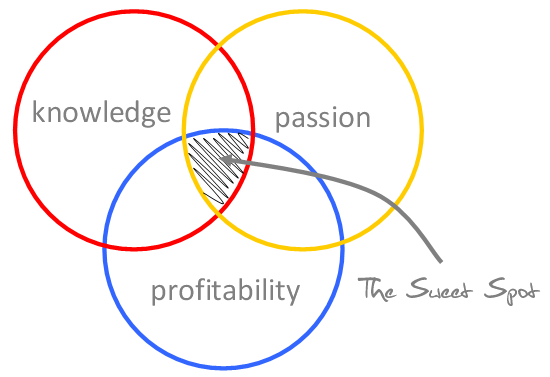|
How to Find Freelance Work
If you’re starting a freelance business, the first fundamental problem is how to find freelance work – your lifeblood. As a teen, a freelance business where you’re your own boss and can do what you like is quite a smart idea. It means you have the flexibility to do stuff besides running your business and working with your ‘clientele’ on terms which suit both of you. Oh, and you can work in your pajamas… Its awesomeness is also its bad side. You have to be disciplined enough to actually do the work and make best use of your time. You’ll also need to find your own clients who are willing to give work and money to a teenager – tough ask – and then keep clients happy. Annoyingly, clients tend to eat up more time than you’d like. Be prepared! Inside this Guide • Get clients and keep clients (For freelancers, being able to work nearly anywhere is a great advantage. If you haven't got one already, consider getting a laptop so you can work on the move.) Some of the thinking behind this guide was inspired by a video on SEOmoz on how to get a job in the search engine optimization industry, but so many of the principles can be applied to almost any freelancing business. So here goes...
Create an Irrefuseable Offer to someone who needs helpIf you’re good at what you’re doing and present yourself well, you can easily pick up work from that companies which can’t necessarily afford professionals. At this crucial stage, small business owners are typically very stretched in terms of their budget they have to spend on services you might be able to offer.
This is a simply fantastic idea. They’ll act almost as a sales agent and send you pre-qualified people to you, saving you the effort and the awkwardness of dealing with wierdos you don’t know. This way you’ll have in effect, a “screening” mechanism which also helps keep you and your personal details safe. • Keep in touch with anyone who agrees to help you find potential clients
You can use your business cards to go around to local businesses, shops and organizations too. I would recommend doing this after you’ve already got a couple of clients UNLESS you already have a personal connection. Why? It’s about credibility. At the end of the day, you’re still a kid walking into a shop and before they’re going to even think about a proposal you’re putting forward, they’ll want some reassurance you know what you’re doing. Take some other work you’ve done with you, ask for their feedback and then let them talk. Browse around online for any job boards on forums and blogs where you might be able to get work. More on communities later...
In principal, if you go looking for work locally, and focus in your work on a specific niche (e.g. graphic design for events organizers) then you’ll help differentiate yourself more from the competition. This increases the likelihood of you getting work (provided there’s enough demand for that particular niche) and not having to slash your rates just to get work.
Get Stuck In!Have little test projects where you can basically ‘be creative’ and come up with a load of different ideas or designs. Ask other people what they think about them, and in the process of making them a) you’ll learn a ton and b) you’ll create some buzz about you, the fact that you’re young and doing something and c) possibly get people interested in hiring you.
Create a New NicheOften, you’ll find most areas you’d like to work in are already pretty competitive. People are charging rock-bottom prices and not really making much money. Don’t be one of them. Instead, find an area where you think you’re particularly strong.
Start trying to ‘conqueror’ that smaller niche and you’ll find you can get clients much easier and make more money. If your industry involves knowing lots about what you’re doing (i.e. if it’s technical) then give back to the community. Show people how to do what you’re doing on a blog or forum or YouTube; it sounds odd to give stuff away for free, but if you do, you become the “go-to-guy” (or gal) within that niche. • The graphic designer who specializes in online caricatures
Join the CommunityWhat you’ll also find is that people in your field will be active contributors to the ‘industry community’. Perhaps you’ve found a couple of really awesome blogs or forums or books about your topic. Get involved, join in the conversation and follow them.
By being in an active community full of helpful advice and caring, passionate people, you’ll pick up all kinds of opportunities and suggestions, as well as learning lots more about your industry.
Coping with ClientsEven when you’ve got clients who’ve agreed to give you work, you need to work hard to maintain a good working relationship with them. A happy client might refer others to you, give you repeat work or even pay you a bonus. Regular email contact giving periodic updates of how the work is going at various points • Initial order requirements and signing of contracts – going through exactly what they want and how they want it As a teenager, the likelihood of you being able to work regular office hours, manning the phones from 9-till-5 is pretty unlikely! That’s why I recommend using computers to communicate. Email is great; you can send and receive it wherever there’s a connection and people are happy to wait a few hours or even a day or two before getting a reply. Get a good email account which makes you appear more professional. Include your first name and/or your town or city and perhaps a word or two about what you do. Something like ed.awesomegraphics@ whatever… Whilst most freelancers would suggest getting a hosted email account (so you have your email @yourdomain.com) because it appears more professional than a gmail or hotmail (free email) account, I wouldn’t worry so much when starting out. Although it may help later, the extra money is probably better spent on things like materials and software to use for your first projects. If you are going to use hosted email, then make sure you choose a quality email provider Besides email, I recommend you use services like Skype and Instant Messengers like MSN to keep in touch with clients real time; because it’s free and live, its an effective way to communicating as if you were over the phone + you can turn it off when you want to do something else. A constantly ringing mobile is the bane of a freelancer’s life - some clients just won’t shut up! Fax may seem a dated method of communicating, but it’s the only way you can get a signature from a client without having to meet them in person (which is nearly always a pain!). It’s also pretty likely, if you’re dealing with another business, that they’ll use fax for business-to-business contact. There are a handful of ways you can still send and receive faxes via the internet – and as a teen freelancer, you’ll likely not have to pay to subscribe to many services since you won’t be using them hundreds of times each month. And if you are, you’ll more than be able to afford it – rates are normally only a few dollars each month.
FaxZero (USA & Canada only)
Creating a Freelance ContractContracts are important. They ensure both you (the freelancer) and the client have a clear understanding of what work and responsibilities have been set, the how’s, when’s, who’s, what’s and why’s… it essentially gives both sides safety from “well, I thought you agreed to do this and that – but you haven’t”. It covers your bottom. Make sure you use contracts every time you accept paid (or even unpaid) work. This slideshow will walk you through the process – you can download a template below.
Download the Example Freelance Contract (zip file)
Getting PaidYou need to take "getting paid" incredibly seriously... its the most important thing in your whole existance as a freelancer. Don't agree? Watch this video... "Fuck You. Pay Me."
Regarding how much you should charge clients for you work, the best advice I’ve heard is this… Charge on an hourly rate unless you know exactly how much time it’ll take you for a single project. This will stop clients taking advantage of your precious time, getting work revised or in case of any unexpected problems. Other freelancers will tell you that getting paid on time is one of the biggest issues they encounter day-in, day-out. You’ll get good clients and bad clients, but if you prepare for the worst (several week late payment) each and every time then anything better can be seen as a bonus. :-) Make paying easy. Offer payment online using services like PayPal (although they do charge a fee for receiving money and HATE under-18s using their services) so people can send money from their accounts or pay by card quickly and easily. Other payment options you might like to try: • Cash: If they’re local, and if you’re meeting them in person, and only when you’re physically exchanging goods (if they’re digital, put them on a memory stick or CD and exchange it for the money) then cash can make perfect sense. It’s untraceable – once its gone, its gone – which is why using cash should only occur when you’re meeting with your clients face-to-face and the work in question was only for a small amount. Anything else is way too risky. If the project is more than around £20-30 then you might want to consider splitting-up the payment process. For example, you might charge £20 at the start of the project before doing any work, and £20 at the end – or on larger projects charge a portion of money at regular intervals like once a week. Remember, if you’re dealing with busy individuals and small companies, creating unnecessary hassle like sending lots of small amounts of money to some scrawny teenager is probably gonna irritate them a little. There’s opposite extremes, so use this technique to help protect yourself, but don’t overuse it if you see what I mean.
Freelance Switch: Getting Paid On Time
How to Find Freelance Work ResourcesGuerilla Freelancing
|






 Startups – businesses which have just started – or industries which are relatively young are the best kind of candidates for this. They’re availability of money is almost non-existent, and yet their demands are high.
Startups – businesses which have just started – or industries which are relatively young are the best kind of candidates for this. They’re availability of money is almost non-existent, and yet their demands are high.

 If you email over your contract with your signature embedded on it (you can scan in a copy and use it as a graphic) then get them to fax it back to you with their signature on it. You can use a service called Drop.io to do this, and still use a
If you email over your contract with your signature embedded on it (you can scan in a copy and use it as a graphic) then get them to fax it back to you with their signature on it. You can use a service called Drop.io to do this, and still use a